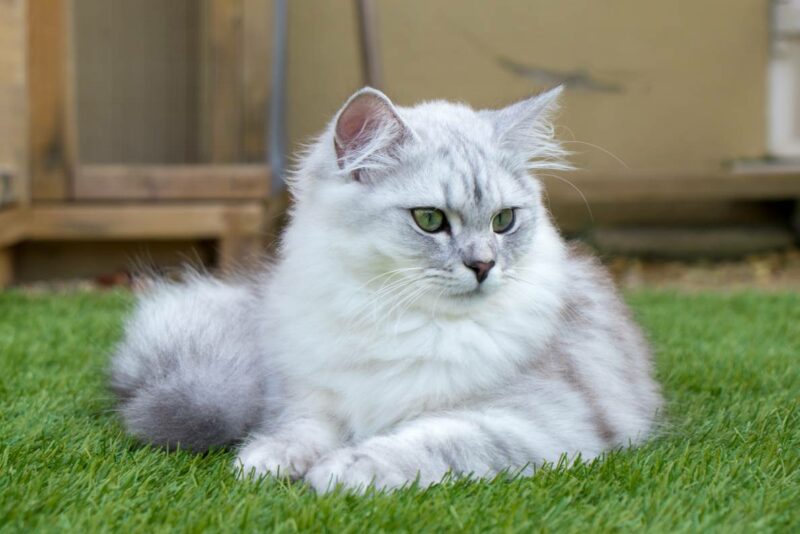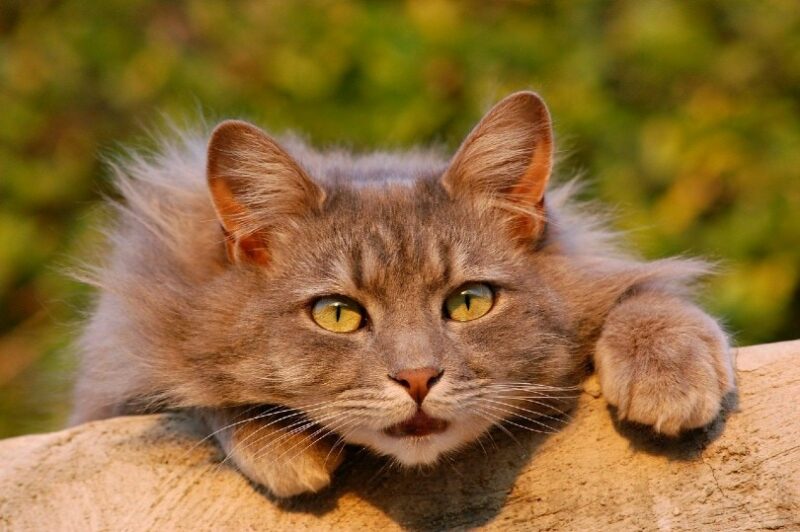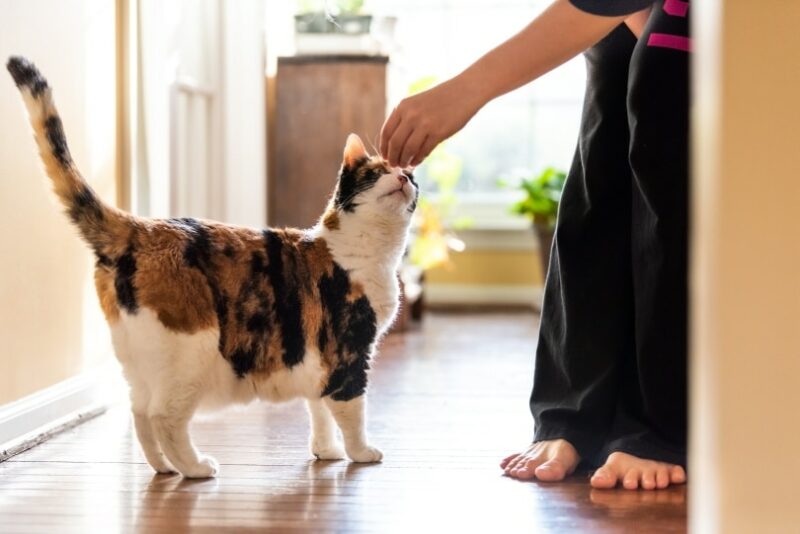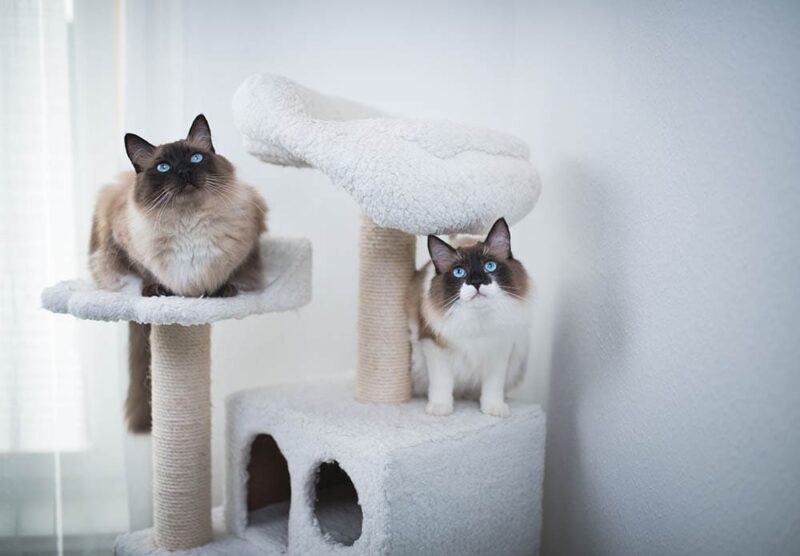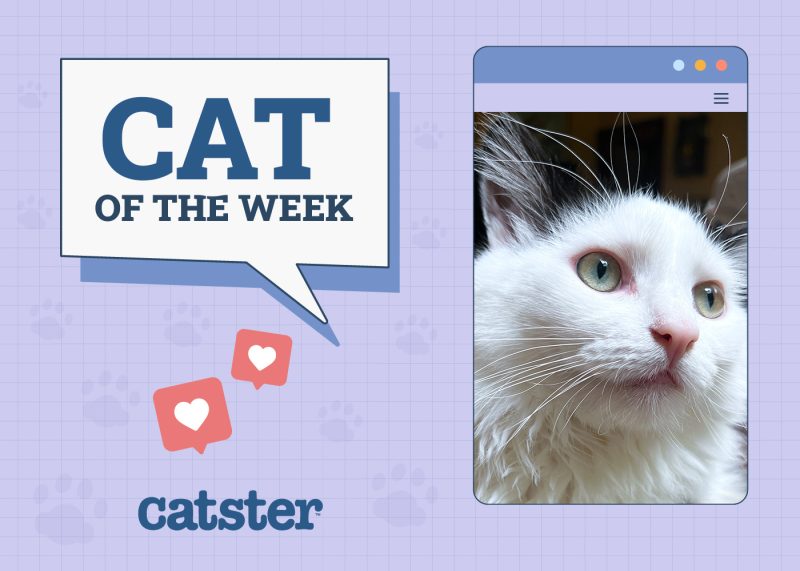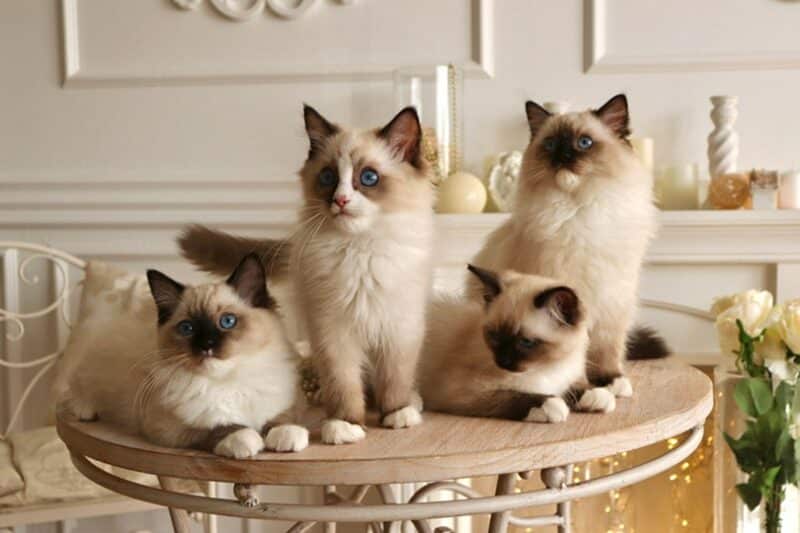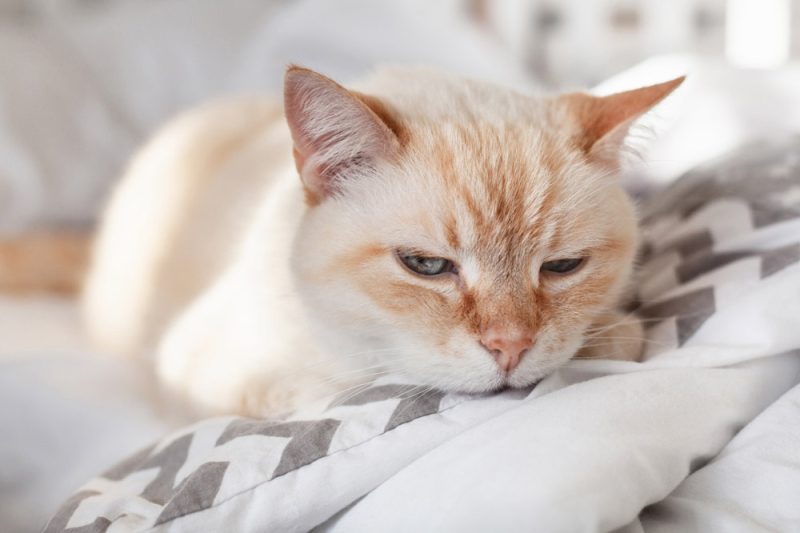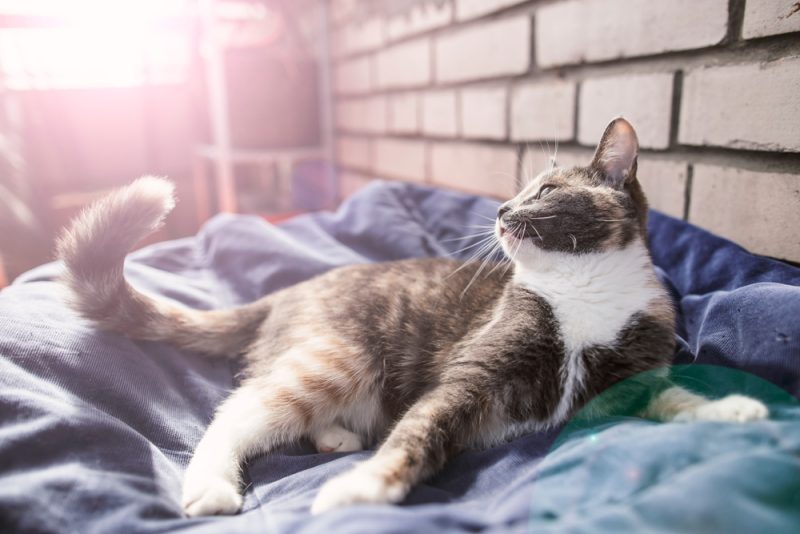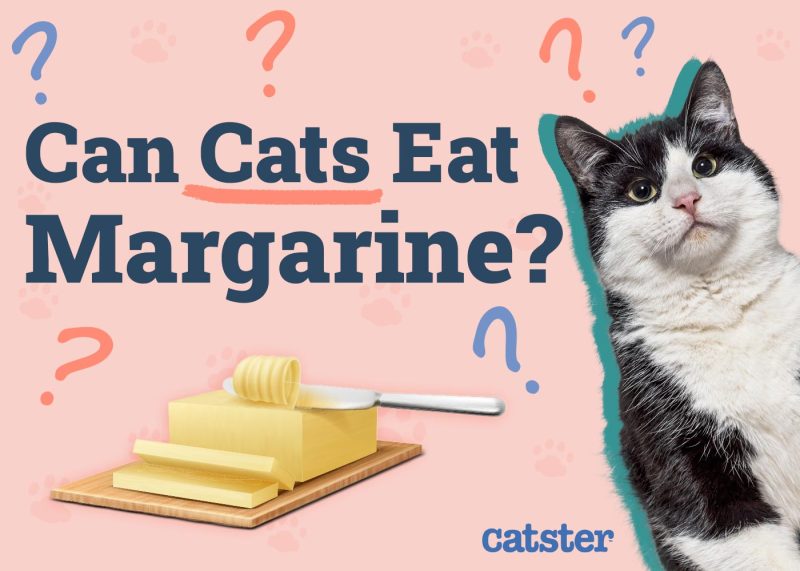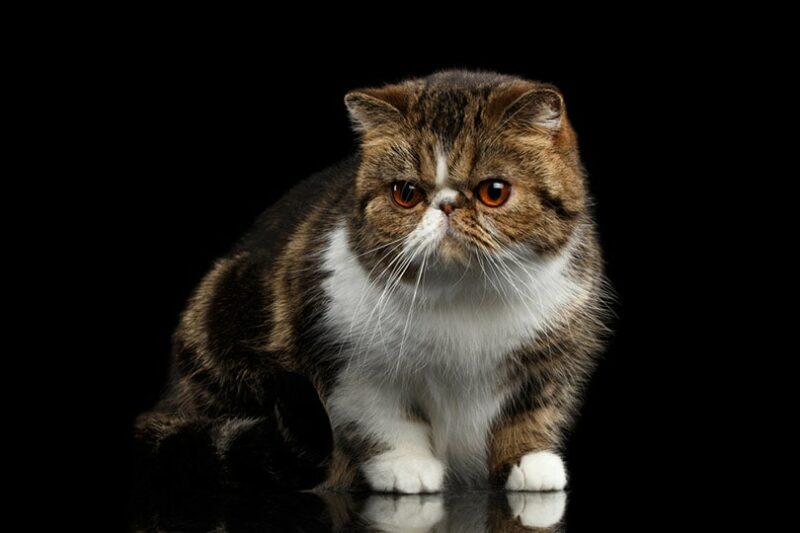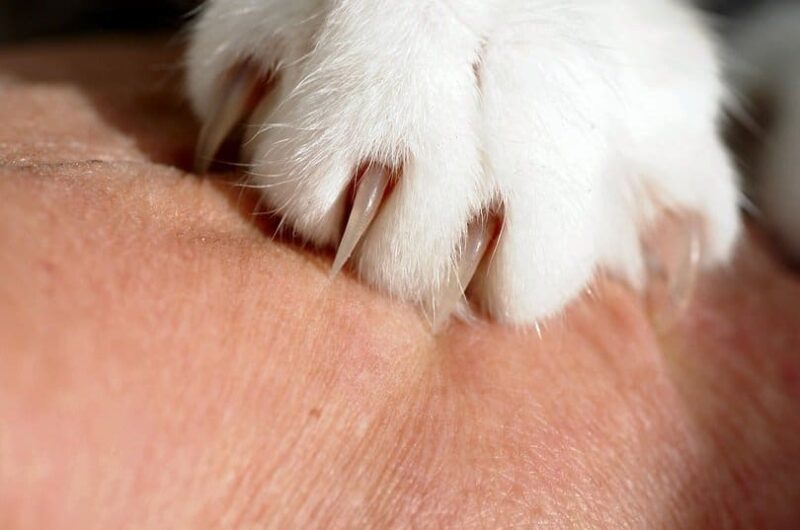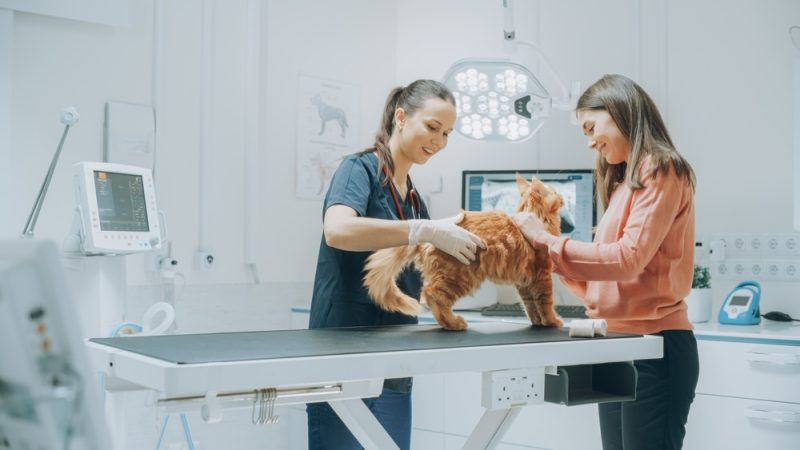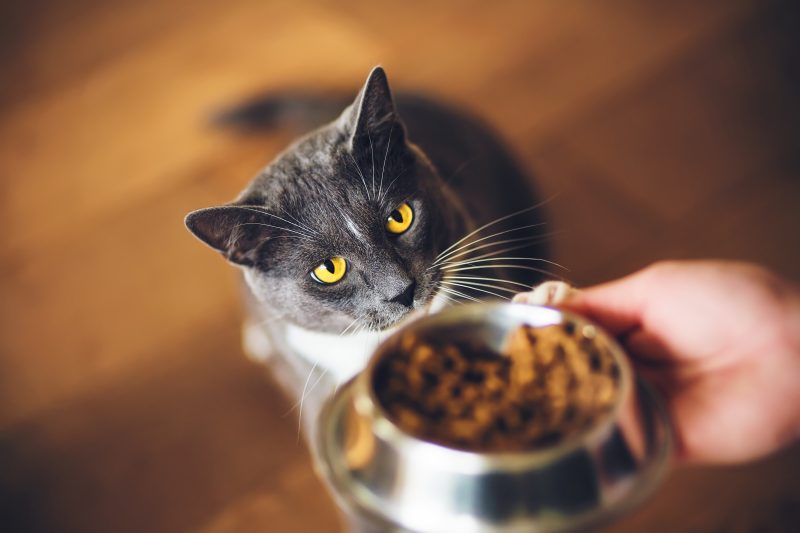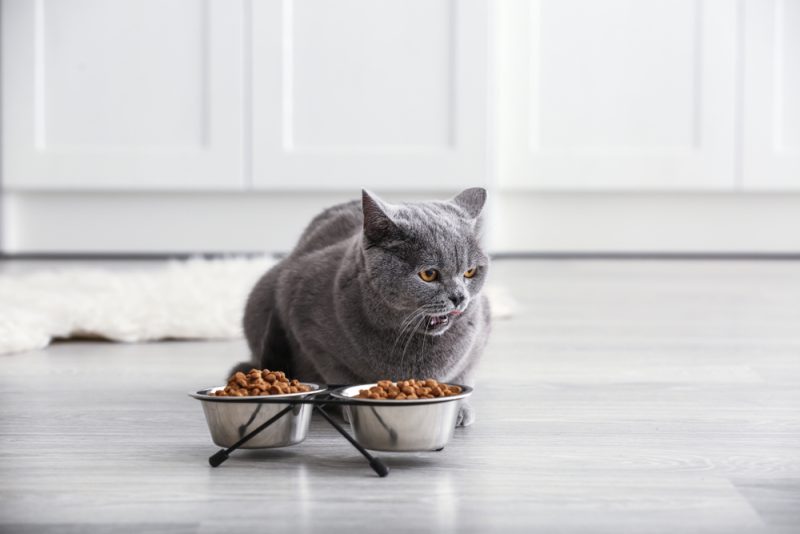In this article
View 8 More +Have you ever wanted a big and beautiful cat that resembles and acts like a teddy bear? You’ve probably never heard of the Ragdoll British Shorthair mix, as it’s a rare cat breed, but it will check all those boxes.
Breed Overview
Height:
9–14 inches
Weight:
12–20 pounds
Lifespan:
15–20 years
Colors:
White, blue, chocolate, lilac, red, seal, black, brown, cream
Suitable for:
Families or singles looking for a laid-back and lovable kitty
Temperament:
Loyal, pleasant, friendly, easygoing
This unique mixed breed takes the best traits of two of the most beloved cat breeds to bring cat owners a loving, loyal, and sociable cat that’s as snuggly as it is beautiful.
Keep reading to learn everything you need to know about this highly sought-after breed to decide if it’s the right pick for your lifestyle.
Ragdoll British Shorthair Mix Characteristics

Ragdoll British Shorthair Mix Kittens

3 Little-Known Facts About the Ragdoll British Shorthair Mix
1. Both Breeds Are Long-Lived
British Shorthairs can live anywhere between 14 and 20 years, while their Ragdoll counterparts often soar past the 15-year mark as well. The average lifespan of most domestic cats is between 11 and 16 years, so given the fact that this mixed breed is created from two of the longer living cat breeds, you can expect most Ragdoll British Shorthair mixes to live a long and healthy life, provided they’re given all the things necessary to thrive.
2. Ragdoll British Shorthairs Are Large
The Ragdoll British Shorthair may be a slow-maturing cat breed that won’t reach its full maturity until 3 or 4 years old. As with most other cat breeds, males will be much taller and heavier than their female counterparts. Males can reach heights of up to 14 inches and weigh up to 20 pounds, while females are usually in the 12-inch height range, weighing in at 15 pounds.
3. There Are Many Color & Pattern Possibilities
British Shorthairs come in a wide array of coat colors, including blue, white, black, lilac, cinnamon, cream, and more. Ragdolls also have seemingly infinite color varieties, such as chocolate, seal, blue, lilac, red, and cream. In addition, both breeds are seen in patterns such as mitted, color-point, bicolor, lynx, tortoiseshell, tri-color, and more. The color of your Ragdoll British Shorthair will depend entirely on its parentage, but there certainly is no shortage of possibilities.
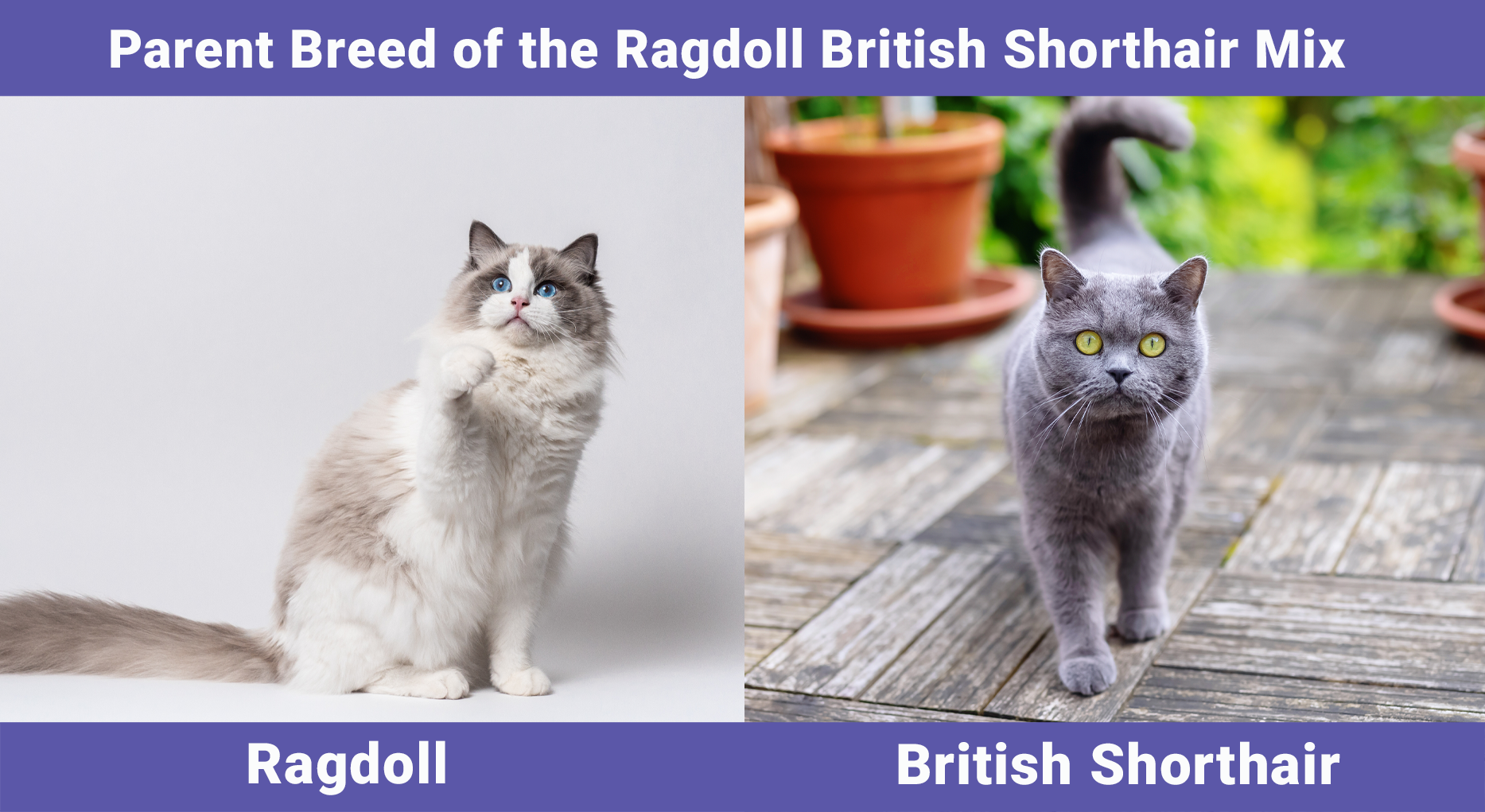

Temperament & Intelligence of the Ragdoll British Shorthair Mix
Ragdoll British Shorthair mixes will take bits and pieces of their personality from both of their originating breeds.
Ragdolls are known for their calm, gentle, and sociable nature. They’re very affectionate towards their humans, and though they crave attention from their family members, they won’t ever demand it. The Ragdoll got its name from its tendency to fall limp whenever picked up. They love to be held and snuggled and are quite content staying in your arms or on your lap as long as you can tolerate it.
British Shorthairs are also very pleasant and easygoing cats. They are fiercely loyal toward their humans and will bond with the entire family versus just one person. They love to play, but like the Ragdoll, they don’t demand attention. British Shorthairs are pretty laid back and are less prone to streaks of hyperactivity than Ragdolls, especially during kittenhood.
Both Ragdolls and British Shorthairs are like big cuddly teddy bears. So, when you adopt a cat that mixes these affable breeds, you can expect that personality trait to have stuck throughout the breeding process.
Are These Cats Good for Families?
Ragdoll British Shorthair mixes make fantastic family pets. Both breeds get along well with children, but Ragdolls are much more likely to be patient with younger kids than British Shorthairs. That’s not to say that if your mixed cat takes more after its British Shorthair side, it can’t get along with your children, though. These cats value their personal space much more than Ragdolls, but they’re not known to be aggressive. They can live harmoniously with your children, provided you teach them how to respect their pet’s space.
Both breeds enjoy a good snuggle session with their people, but Ragdolls are more of a lap cat than their British Shorthair counterparts.
Does This Breed Get Along With Other Pets?
British Shorthairs and Ragdolls are very laid-back breeds, making them well-suited to life with other cats and even cat-friendly dogs. Both have mild temperaments and personality traits similar to dogs in many ways.
Your Ragdoll British Shorthair mix can get along well with your other pets; just make sure you follow proper introduction methods to keep the peace those first few weeks.

Things to Know When Owning a Ragdoll British Shorthair Mix:
Food & Diet Requirements 
The ideal diet for a Ragdoll British Shorthair is not much different from what is recommended for most domestic cats. Their diet needs to center around animal protein, as this is what their digestive systems are designed to process. Find a cat food that lists real meat as the first ingredient to ensure your kitty gets the high-quality protein it needs to thrive.
You might also consider a breed-specific diet, like the Ragdoll kibble from Royal Canin. This food was formulated to meet the needs of adult Ragdolls, while its exclusive blend of nutrients can help nourish your pet’s skin and coat and maintain heart health.
Since they’re both naturally large breeds, British Shorthairs and Ragdolls can be prone to obesity, so ensuring you’ve selected a high-quality diet is of the utmost importance.
Exercise
Since the Ragdoll British Shorthair mix is bred from two larger cat breeds, it’s important to ensure your kitty is getting plenty of exercise every day. Ragdolls and British Shorthairs can get obese if they get too lazy, a feat that’s easy for these extra-chill cats.
You don’t need to follow any special exercise regimen, as your kitty will be happy expending energy by playing. However, ensure you have provided many opportunities for physical enrichment by investing in toys or cat trees, and set aside time daily to play with your pet.
Training
Both Ragdolls and British Shorthair cats are intelligent and relatively easy to train. You can teach your mixed cat to retrieve thrown toys, to come when they’re called, and plenty of other fun tricks. In addition, they’re both pretty quick to catch on to basic cat training, such as using litter boxes and scratching posts.
Your Ragdoll British Shorthair mix is likely to be food-motivated, so use plenty of tasty treats when trying to train your kitty to learn new tricks.
Grooming ✂️
The grooming needs of your Ragdoll British Shorthair mix will depend on which of its parents your kitty takes after.
Ragdolls have long coats that require brushing at least twice a week to keep tangles and mats at bay. They typically enjoy getting groomed, however, so this should be a pretty easy and enjoyable task for both of you. Though they have long fur, Ragdolls don’t shed as much as you might expect them to.
The same can’t be said of the British Shorthair, however. Despite their short, dense, and plush coats, this breed does shed a moderate amount, especially during the spring and autumn seasons.
Health and Conditions
Ragdolls and British Shorthairs are both generally healthy breeds that can live well into their late teens, early twenties, and beyond. However, Ragdolls are typically healthier, as British Shorthairs are susceptible to certain conditions, such as polycystic kidney disease and hemophilia B.
The good news is that many genetic health conditions can be found through DNA testing, allowing cat breeders to identify the carriers of these conditions so as not to continue breeding them. So, be sure to ask your breeder for proof that your Ragdoll British Shorthair is not a carrier of any diseases before adopting it.
Of course, as with all other domestic cat breeds, they can be susceptible to certain health conditions.
- Hairballs
- Fleas
- Coat disorders
- Periodontal disease
- Hypertrophic cardiomyopathy
- Polycystic kidney disease
- Hemophilia B
- Urinary tract issues
- Kidney issues
- Obesity

Male vs. Female
As with most cat breeds, the most significant difference between male and female Ragdoll British Shorthair mixes is the size.
Male British Shorthairs can weigh up to 18 pounds, while their female counterparts usually only get to be around 12 pounds. Size-wise, males can be up to 20 inches, while females are slightly shorter at just 18 inches.
The same rules apply to male Ragdolls, who can weigh up to 20 pounds and be 11 inches in height. Females tip the scales at around 15 pounds and are just a hair shorter at 10 inches. Males can have thicker coats, though females often have more distinct markings.
There may be a few differences between sexes when considering personality. For example, male Ragdolls can be more playful and active, while females tend to be calmer and less demanding.
Male British Shorthairs are much the same, tending to be more friendly than females. In addition, they’re not as likely to be as territorial or aggressive as other male cats. Female British Shorthairs are often calmer than their male counterparts but can be prone to streaks of moodiness if their space is at stake.

Final Thoughts
The Ragdoll British Shorthair mix is a beautiful cat breed with many fantastic personality traits to offer its family members. They are very easygoing, loving, and sociable cats who will bond with each family member, including other cats and pets in the home.
Unfortunately, it seems that finding this mix might be quite the task, but if you’re serious about it, we’re sure you can find a reputable breeder with a little time and patience.
See Also:
- Ragdoll Kittens for Sale in Illinois: Breeders List
- Ragdoll Kittens for Sale in South Carolina: Breeders List
Featured Image Credit: Bianka Kovacs, Shutterstock
